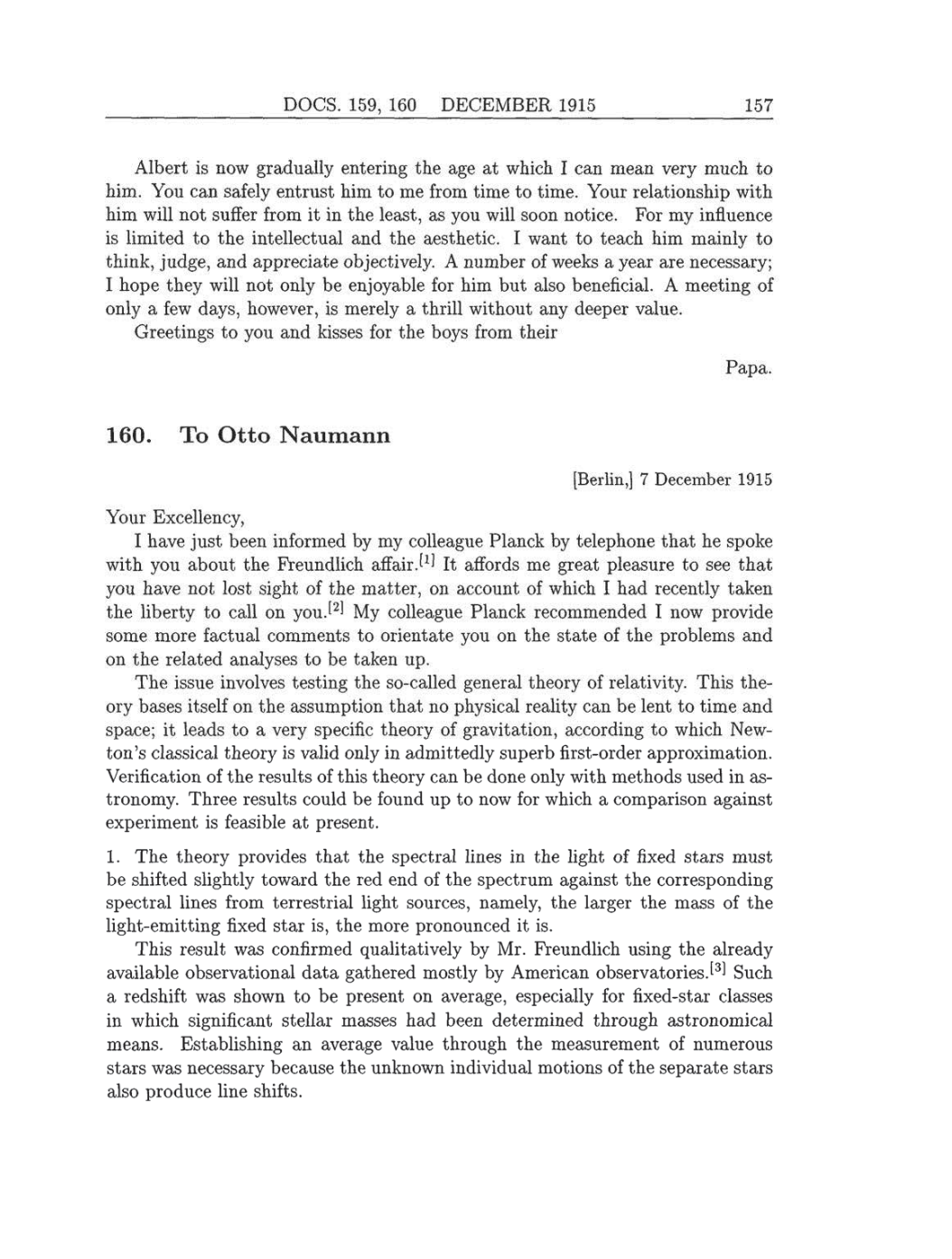DOCS.
159,
160
DECEMBER
1915 157
Albert
is
now
gradually entering
the
age
at which
I
can mean
very
much
to
him. You
can
safely
entrust him to
me
from time to time. Your
relationship
with
him will
not
suffer from it in
the
least,
as
you
will
soon
notice. For
my
influence
is
limited to
the
intellectual and
the
aesthetic.
I
want to teach him
mainly
to
think,
judge,
and
appreciate
objectively.
A number
of weeks
a
year
are
necessary;
I
hope
they will not
only
be
enjoyable
for him but
also beneficial. A
meeting
of
only
a
few
days, however,
is
merely
a
thrill without
any deeper
value.
Greetings
to
you
and
kisses for
the
boys
from
their
Papa.
160. To Otto Naumann
[Berlin,]
7
December
1915
Your
Excellency,
I
have
just
been informed
by my colleague
Planck
by
telephone
that
he
spoke
with
you
about the
Freundlich
affair.[1]
It
affords
me great
pleasure
to
see
that
you
have not lost
sight
of
the
matter,
on
account
of
which
I
had
recently
taken
the
liberty
to call
on
you.[2]
My
colleague
Planck recommended
I
now
provide
some more
factual
comments to orientate
you
on
the
state
of
the
problems
and
on
the related
analyses
to be taken
up.
The
issue involves
testing
the
so-called
general theory
of
relativity.
This
the-
ory
bases itself
on
the
assumption
that
no
physical reality
can
be lent to time
and
space;
it leads
to
a
very
specific
theory
of
gravitation, according
to which New-
ton’s classical
theory
is valid
only
in admittedly
superb
first-order
approximation.
Verification of the results of this
theory
can
be done
only
with methods
used
in
as-
tronomy.
Three
results could be found
up
to
now
for
which
a
comparison
against
experiment
is
feasible at
present.
1.
The
theory
provides
that
the spectral
lines in
the light of
fixed
stars
must
be shifted slightly toward the red end
of
the spectrum against
the
corresponding
spectral
lines from
terrestrial
light sources, namely, the larger
the
mass
of
the
light-emitting
fixed
star
is,
the more pronounced it
is.
This result
was
confirmed
qualitatively by
Mr. Freundlich
using
the
already
available observational
data
gathered mostly by
American observatories.[3] Such
a
redshift
was
shown to be
present
on
average, especially
for fixed-star classes
in which
significant
stellar
masses
had been determined
through
astronomical
means.
Establishing
an
average
value
through
the
measurement
of
numerous
stars
was
necessary
because
the
unknown individual motions
of
the
separate
stars
also
produce
line
shifts.
